Manisha Sinha in Boston Review:
 Walter Johnson is upset at the state of the historiography of slavery and rightly challenges uncritical talk of “dehumanization.” In its most extreme iteration, a few have even likened enslavement to the domestication of animals. This logic would carry us all the way back to Aristotle, who described slaves as talking tools. Pro-slavery ideologues were fond of this idea, even though southern slaveholders exploited the “human capacities” of enslaved people—to labor, reproduce, and, in Johnson’s more Genovesean formulation, “to bear witness, to provide satisfaction, to provide a living, human register of slaveholders’ power.”
Walter Johnson is upset at the state of the historiography of slavery and rightly challenges uncritical talk of “dehumanization.” In its most extreme iteration, a few have even likened enslavement to the domestication of animals. This logic would carry us all the way back to Aristotle, who described slaves as talking tools. Pro-slavery ideologues were fond of this idea, even though southern slaveholders exploited the “human capacities” of enslaved people—to labor, reproduce, and, in Johnson’s more Genovesean formulation, “to bear witness, to provide satisfaction, to provide a living, human register of slaveholders’ power.”
To advance this critique, Johnson appropriates Cedric Robinson’s thesis of racial capitalism. But he does not fully engage the antithesis of that social arrangement: what Robinson called the black radical tradition and W. E. B. Du Bois “the role black folk played” in reconstructing democracy. Radical black scholars and activists—from Robinson, Du Bois, and C. L. R. James to Claudia Jones, Ida B. Wells, Sterling Stuckey, and Vincent Harding—wrote histories not just of black oppression but also of resistance, a term that many historians of slavery and the African American experience now consider passé. Indeed, Johnson does not use the word at all. It might have an old-fashioned Marxist ring to it, but it has proven fruitful and capacious in the hands of such contemporary scholars of black politics and art as Eric Foner, Nell Painter, Steven Hahn, and Robin D. G. Kelley. These writers are heirs to a tradition that stretches back, in my reckoning, to African American abolitionists: Phillis Wheatley, Sojourner Truth, David Walker, Henry Highland Garnet, Frederick Douglass, Frances Harper, and Martin Delany. The richness of this lineage is missing from Johnson’s account even though, following Kelley, he acknowledges its contemporary activist formulation in the Movement for Black Lives’ broad-ranging manifesto, “A Vision for Black Lives.”
More here. (Note: Throughout February, at least one post will be dedicated to Black History Month. The theme for 2023 is Black Resistance. Please send us anything you think is relevant for inclusion)
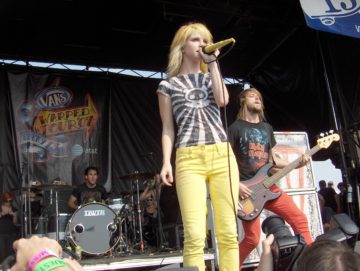 The tides of influence in music history move in unexpected ways. There are very few towering rock legends or chart-dominating contemporary rappers, for instance, who’ve enjoyed the sprawling and intensifying authority of the pop-punk band Paramore. The band, which was formed in the mid-two-thousands by a group of Christian teen-agers from the outskirts of Nashville, rose to prominence as emo and pop punk were being commercialized for mainstream audiences. Paramore—fronted by Hayley Williams, a vocal powerhouse with neon-marigold hair and a high degree of emotional athleticism—was a small-town Myspace act that hit it big. By the band’s third album, “Brand New Eyes,” from 2009, it had been nominated for a Grammy and included on the “Twilight” soundtrack. The following year, departing bandmates condemned it for being a “manufactured product of a major label.” No band had ever put the “pop” in “pop punk” more effectively than Paramore.
The tides of influence in music history move in unexpected ways. There are very few towering rock legends or chart-dominating contemporary rappers, for instance, who’ve enjoyed the sprawling and intensifying authority of the pop-punk band Paramore. The band, which was formed in the mid-two-thousands by a group of Christian teen-agers from the outskirts of Nashville, rose to prominence as emo and pop punk were being commercialized for mainstream audiences. Paramore—fronted by Hayley Williams, a vocal powerhouse with neon-marigold hair and a high degree of emotional athleticism—was a small-town Myspace act that hit it big. By the band’s third album, “Brand New Eyes,” from 2009, it had been nominated for a Grammy and included on the “Twilight” soundtrack. The following year, departing bandmates condemned it for being a “manufactured product of a major label.” No band had ever put the “pop” in “pop punk” more effectively than Paramore.
 African Americans have resisted historic and ongoing oppression, in all forms, especially the racial terrorism of lynching, racial pogroms, and police killings since our arrival upon these shores. These efforts have been to advocate for a dignified self-determined life in a just democratic society in the United States and beyond the United States political jurisdiction. The 1950s and 1970s in the United States was defined by actions such as sit-ins, boycotts, walk outs, strikes by Black people and white allies in the fight for justice against discrimination in all sectors of society from employment to education to housing. Black people have had to consistently push the United States to live up to its ideals of freedom, liberty, and justice for all. Systematic oppression has sought to negate much of the dreams of our griots, like Langston Hughes and Zora Neale Hurston, and our freedom fighters, like the Rev. Dr. Martin Luther King, Jr., Septima Clark, and Fannie Lou Hamer fought to realize. Black people have sought ways to nurture and protect Black lives, and for autonomy of their physical and intellectual bodies through armed resistance, voluntary emigration, nonviolence, education, literature, sports, media, and legislation/politics. Black led institutions and affiliations have lobbied, litigated, legislated, protested, and achieved success.
African Americans have resisted historic and ongoing oppression, in all forms, especially the racial terrorism of lynching, racial pogroms, and police killings since our arrival upon these shores. These efforts have been to advocate for a dignified self-determined life in a just democratic society in the United States and beyond the United States political jurisdiction. The 1950s and 1970s in the United States was defined by actions such as sit-ins, boycotts, walk outs, strikes by Black people and white allies in the fight for justice against discrimination in all sectors of society from employment to education to housing. Black people have had to consistently push the United States to live up to its ideals of freedom, liberty, and justice for all. Systematic oppression has sought to negate much of the dreams of our griots, like Langston Hughes and Zora Neale Hurston, and our freedom fighters, like the Rev. Dr. Martin Luther King, Jr., Septima Clark, and Fannie Lou Hamer fought to realize. Black people have sought ways to nurture and protect Black lives, and for autonomy of their physical and intellectual bodies through armed resistance, voluntary emigration, nonviolence, education, literature, sports, media, and legislation/politics. Black led institutions and affiliations have lobbied, litigated, legislated, protested, and achieved success.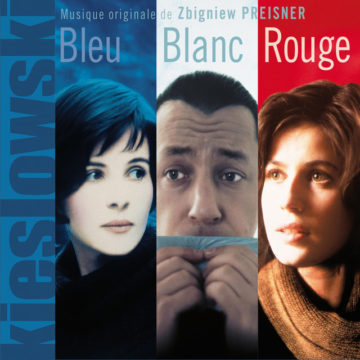 Music looms as a spectral presence over Krzysztof Kieślowski’s Blue, White, and Red, collectively known as the Three Colors trilogy. Like the triad of colored lights that bounce on the beautiful, sad faces in the films, Zbigniew Preisner’s multi-hued scores reflect on the images and refract from the inside out. Stern, lonely, and at times almost unbearably passionate, they often penetrate the ears and hearts of the characters. When the grieving heroine of Blue is suddenly overwhelmed by notes from a stoic oratorio, those notes are Preisner’s; when the lost protagonist of Red finds solace in an aria she plays at a record store, the music flowing through her headphones is his. Kieślowski may have written the stories—with the help of screenwriter Krzysztof Piesiewicz and screenplay consultants Agnieszka Holland, Edward Zebrowski, Slawomir Idziak, Edward Kłosiński, and Piotr Sobociński—but Preisner deserves credit for cocreating the trilogy’s mood of existential despair.
Music looms as a spectral presence over Krzysztof Kieślowski’s Blue, White, and Red, collectively known as the Three Colors trilogy. Like the triad of colored lights that bounce on the beautiful, sad faces in the films, Zbigniew Preisner’s multi-hued scores reflect on the images and refract from the inside out. Stern, lonely, and at times almost unbearably passionate, they often penetrate the ears and hearts of the characters. When the grieving heroine of Blue is suddenly overwhelmed by notes from a stoic oratorio, those notes are Preisner’s; when the lost protagonist of Red finds solace in an aria she plays at a record store, the music flowing through her headphones is his. Kieślowski may have written the stories—with the help of screenwriter Krzysztof Piesiewicz and screenplay consultants Agnieszka Holland, Edward Zebrowski, Slawomir Idziak, Edward Kłosiński, and Piotr Sobociński—but Preisner deserves credit for cocreating the trilogy’s mood of existential despair.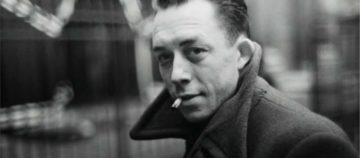 In 1948, Albert Camus gave a speech at a Dominican monastery. The invitation was unusual. At this time, Camus’s best-known novel was The Stranger (1). He was often called “the philosopher of the absurd” because his philosophical essay, The Myth of Sisyphus (2), grappled with the question: why should you not kill yourself, given that the universe is without a purpose? And yet, these Dominicans asked Camus to speak on the theme of what the atheist would ask of the theist.
In 1948, Albert Camus gave a speech at a Dominican monastery. The invitation was unusual. At this time, Camus’s best-known novel was The Stranger (1). He was often called “the philosopher of the absurd” because his philosophical essay, The Myth of Sisyphus (2), grappled with the question: why should you not kill yourself, given that the universe is without a purpose? And yet, these Dominicans asked Camus to speak on the theme of what the atheist would ask of the theist. The Wife of Bath is the first ordinary woman in English literature. By that I mean the first mercantile, working, sexually active woman—not a virginal princess or queen, not a nun, witch, or sorceress, not a damsel in distress nor a functional servant character, not an allegory. A much married woman and widow, who works in the cloth trade and tells us about her friends, her tricks, her experience of domestic abuse, her long career combating misogyny, her reflections on the aging process, and her enjoyment of sex, Alison exudes vitality, wit, and rebellious self-confidence.
The Wife of Bath is the first ordinary woman in English literature. By that I mean the first mercantile, working, sexually active woman—not a virginal princess or queen, not a nun, witch, or sorceress, not a damsel in distress nor a functional servant character, not an allegory. A much married woman and widow, who works in the cloth trade and tells us about her friends, her tricks, her experience of domestic abuse, her long career combating misogyny, her reflections on the aging process, and her enjoyment of sex, Alison exudes vitality, wit, and rebellious self-confidence. For almost a decade, supporters of nuclear power have been predicting a comeback for the beleaguered technology. “In recent years, some eco-pragmatists and climate scientists have begun touting the advantages of zero-carbon nuclear energy,” I wrote in
For almost a decade, supporters of nuclear power have been predicting a comeback for the beleaguered technology. “In recent years, some eco-pragmatists and climate scientists have begun touting the advantages of zero-carbon nuclear energy,” I wrote in  Karel Čapek’s “War with the Newts,” published in 1936, one of the greatest pieces of science fiction of the 20th century, is a prophetic work. When I say prophetic, I mean it has the gift of seeing the present for what it is — and not only seeing it but also telling the rest of us what we have been looking at. “War with the Newts” said to its contemporaries that their civilization was living on borrowed time; it explained how ultimately suicidal the shortsightedness and injustice of their way of living was. Eighty-five years later, after the Trump administration erased “climate change” from its official websites and the world digs furiously deeper into the pit of fossil fuel dependency, Čapek’s apocalyptic vision has if anything become even more eerily, powerfully unsettling than it was in the context of Europe teetering on the brink of the Second World War.
Karel Čapek’s “War with the Newts,” published in 1936, one of the greatest pieces of science fiction of the 20th century, is a prophetic work. When I say prophetic, I mean it has the gift of seeing the present for what it is — and not only seeing it but also telling the rest of us what we have been looking at. “War with the Newts” said to its contemporaries that their civilization was living on borrowed time; it explained how ultimately suicidal the shortsightedness and injustice of their way of living was. Eighty-five years later, after the Trump administration erased “climate change” from its official websites and the world digs furiously deeper into the pit of fossil fuel dependency, Čapek’s apocalyptic vision has if anything become even more eerily, powerfully unsettling than it was in the context of Europe teetering on the brink of the Second World War.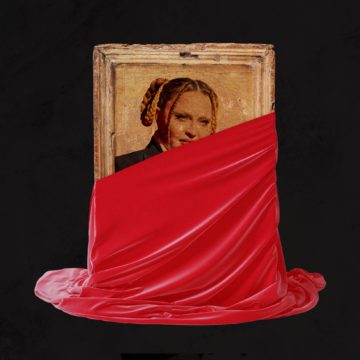 With blond braids looped over her ears, dressed in a long black skirt and black jacket accessorized with a riding crop, one of the best-selling female recording artists of all time stepped into the spotlight at the 65th annual Grammy Awards Sunday night. Madonna was there to introduce Sam Smith and Kim Petras, a nonbinary performer and a trans woman. She began by referring to her four decades in the music industry, and praised the rebels “forging a new path and taking the heat for all of it.” Was anyone listening? Social media’s loudest roars weren’t about her speech, her longtime L.G.B.T.Q. advocacy or her upcoming world tour. They were about Madonna’s preternaturally smooth and extravagantly sculpted face.
With blond braids looped over her ears, dressed in a long black skirt and black jacket accessorized with a riding crop, one of the best-selling female recording artists of all time stepped into the spotlight at the 65th annual Grammy Awards Sunday night. Madonna was there to introduce Sam Smith and Kim Petras, a nonbinary performer and a trans woman. She began by referring to her four decades in the music industry, and praised the rebels “forging a new path and taking the heat for all of it.” Was anyone listening? Social media’s loudest roars weren’t about her speech, her longtime L.G.B.T.Q. advocacy or her upcoming world tour. They were about Madonna’s preternaturally smooth and extravagantly sculpted face. Walter Johnson is upset at the state of the historiography of slavery and rightly challenges uncritical talk of “dehumanization.” In its most extreme iteration, a few have even likened enslavement to the domestication of animals. This logic would carry us all the way back to Aristotle, who described slaves as talking tools. Pro-slavery ideologues were fond of this idea, even though southern slaveholders exploited the “human capacities” of enslaved people—to labor, reproduce, and, in Johnson’s more Genovesean formulation, “to bear witness, to provide satisfaction, to provide a living, human register of slaveholders’ power.”
Walter Johnson is upset at the state of the historiography of slavery and rightly challenges uncritical talk of “dehumanization.” In its most extreme iteration, a few have even likened enslavement to the domestication of animals. This logic would carry us all the way back to Aristotle, who described slaves as talking tools. Pro-slavery ideologues were fond of this idea, even though southern slaveholders exploited the “human capacities” of enslaved people—to labor, reproduce, and, in Johnson’s more Genovesean formulation, “to bear witness, to provide satisfaction, to provide a living, human register of slaveholders’ power.”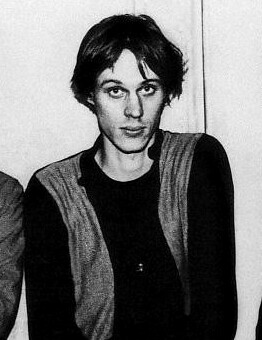 He awoke to the sound of water dripping into a rusted sink. The streets below were bathed in medieval moonlight, reverberating silence. He lay there grappling with the terror of beauty, as the night unfolded like a Chinese screen. He lay shuddering, riveted by flickering movements of aliens and angels as the words and melodies of “Marquee Moon” were formed, drop by drop, note by note, from a state of calm yet sinister excitement. He was Tom Verlaine, and that was his process: exquisite torment.
He awoke to the sound of water dripping into a rusted sink. The streets below were bathed in medieval moonlight, reverberating silence. He lay there grappling with the terror of beauty, as the night unfolded like a Chinese screen. He lay shuddering, riveted by flickering movements of aliens and angels as the words and melodies of “Marquee Moon” were formed, drop by drop, note by note, from a state of calm yet sinister excitement. He was Tom Verlaine, and that was his process: exquisite torment. Three is a more interesting number than two. There’s a romance to the love triangle. There’s an inherent asymmetry, a more volatile set of relationships. Our desires are most manifest when we’re being pulled in two directions, when there are disparate, orthogonal, or even oppositional forces inside us. Those are the moments when complex self-knowledge happens. The times when you have to prioritize multiple, competing selves lead to personal transformation, I think.
Three is a more interesting number than two. There’s a romance to the love triangle. There’s an inherent asymmetry, a more volatile set of relationships. Our desires are most manifest when we’re being pulled in two directions, when there are disparate, orthogonal, or even oppositional forces inside us. Those are the moments when complex self-knowledge happens. The times when you have to prioritize multiple, competing selves lead to personal transformation, I think.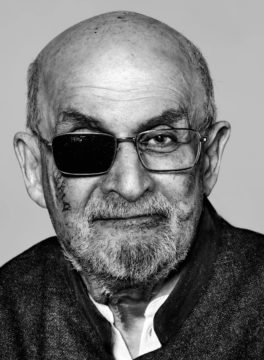 When
When 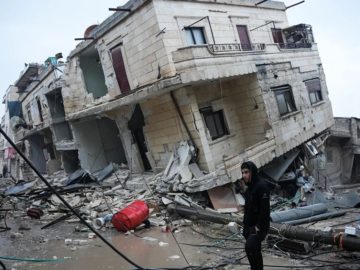 A magnitude-7.8 earthquake hit southeastern Turkey and parts of Syria in the early hours of the morning of 6 February. At least 5,000 people are known to have lost their lives, with thousands more injured. The quake was followed by a magnitude-7.5 event some 9 hours later, as well as more than 200 aftershocks.
A magnitude-7.8 earthquake hit southeastern Turkey and parts of Syria in the early hours of the morning of 6 February. At least 5,000 people are known to have lost their lives, with thousands more injured. The quake was followed by a magnitude-7.5 event some 9 hours later, as well as more than 200 aftershocks.